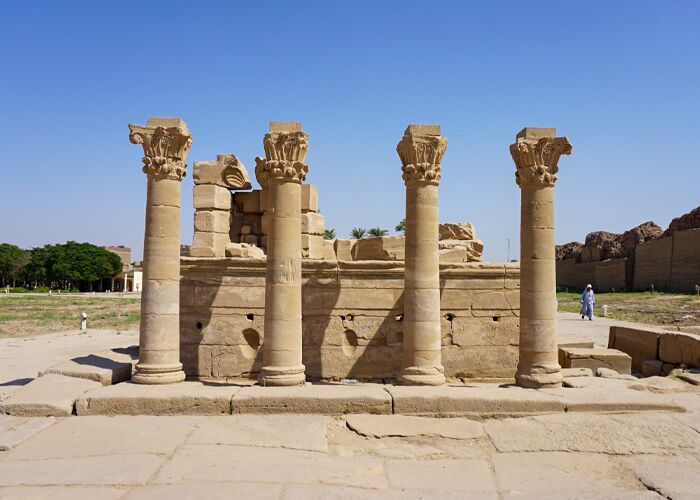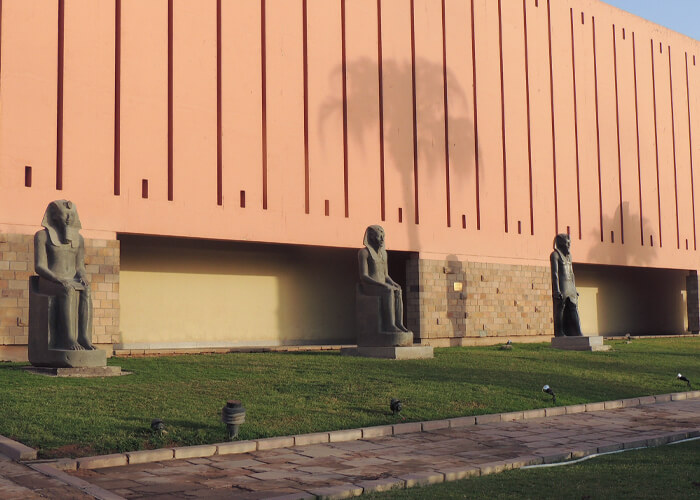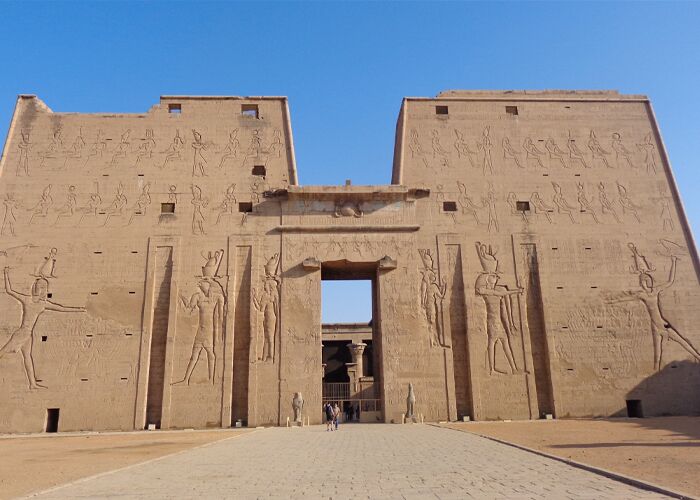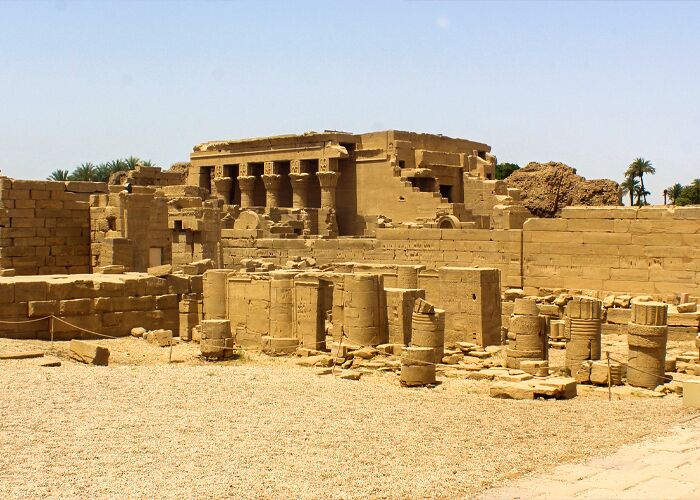Temple of Dendera: The temple of Dendera, built by Ptolemy IX SoterII, is situated in the middle of a vast area bordered by a wall of air-dried bricks that is almost destroyed and has sides that are between 925 and 990 feet long; on the north and east sides of the wall are two magnificent portals that were built during the period of Roman rule.
UNESCO has designated Egypt’s Dendera Temple as a World Heritage Site.
The following subjects are covered:
Highlights of Dandara
Dandara Temples and Their History
Birthplace of the Pharaohs: Mammisi
Dandara’s Most Memorable Moments, Dandara’s Best Work, and More
Dendera In ancient Egypt, the Temple of Luxor was one of the most important religious institutions and remains one of the most famous tourist sites in the city.
South of Qena, Egypt, it is situated on the Nile’s west bank.
Luxor was home to a number of trinitarian temples, including three devoted to Horus, the sky deity and guardian of the pharaohs, as well as the Sanctuary of Ihy and the Sanctuary of Hathor, the god’s son who played the sistrum.
Even while the other two are still visible in their original places, only the latter has survived practically entirely intact.
Background information about Dandara
However, the existing complex of Dendera dates back to the late Ptolemaic and Roman periods, which means it must have existed from the dawn of time.
As can be seen in this lithograph of the interior of the first hypostyle room, a magnificent chamber over 80 feet deep with 18 huge columns covered in bas-reliefs and a plethora of other features, a magnificently scenic style predominated that was less severe than that of the earliest Egyptian temples.
Instead of the conventional pylon in sacred Egyptian architecture, the temples of Dendera contain a massive structure spanning 139 feet broad by 60 feet high, with six columns supporting an exceptional cornice on the façade.
Up to the midway point, the intercolumniations are filled with panels with hieroglyphic writings and bas-reliefs, while the entry is located in the middle, creating a lofty and spacious area.
When you go in, you’re greeted with a large, open area in the middle.
The city’s patroness is shown in all of the capitals on the interior’s 18 extra columns, which are grouped in three rows.
This hypostyle chamber, built by Tiberius, acts as a replacement for the destroyed Pylon since it is raised above the rest of the temple.
For example, the Temples of Dandara
Located in the center of a huge region, the Ptolemaic temple of Dendera was constructed by Ptolemy IX Soter II and has sides that are between 925 and 990 feet long. On the north and east sides of the wall, there are two splendid Roman gateways.
Numerous notable landmarks may be seen in the vicinity of the sacred site, including a majestic temple.
Not far from the big temple’s rear façade are the severely damaged remains of a small shrine dedicated to the birth of Isis, in which the surviving reliefs represent Nut, Goddess of the Sky, giving birth while sitting on a stool, in accordance with an ancient local custom.
Only a deep rectangular pit encircled by a boundary wall is all that is left of the sacred lake, which was distinctive of all Egyptian sanctuaries and where the priests were supposed to perform their ritual ablutions numerous times a day.
Hathor Temple’s western wall and northwest corner are home to many important remnants including an ancient sanatorium, a Roman Coptic church, and two mammisi, one Ptolemaic and the other Roman.
Mammisi (the birth chapel of the pharaohs) (the birth chapel of the pharaohs)
“Birth chapel” in Egyptian is a small temple that was built to commemorate the gods’ births during the Early Period, when the pharaohs’ progeny were celebrated.
Every single one of their children, who were considered to be on par with living deities, was born and raised completely inside the walls of the temple.
At Dendera, Nectanebo I built the first of these structures, which stands adjacent to Augustus’ second, between 378 and 360 BC.




